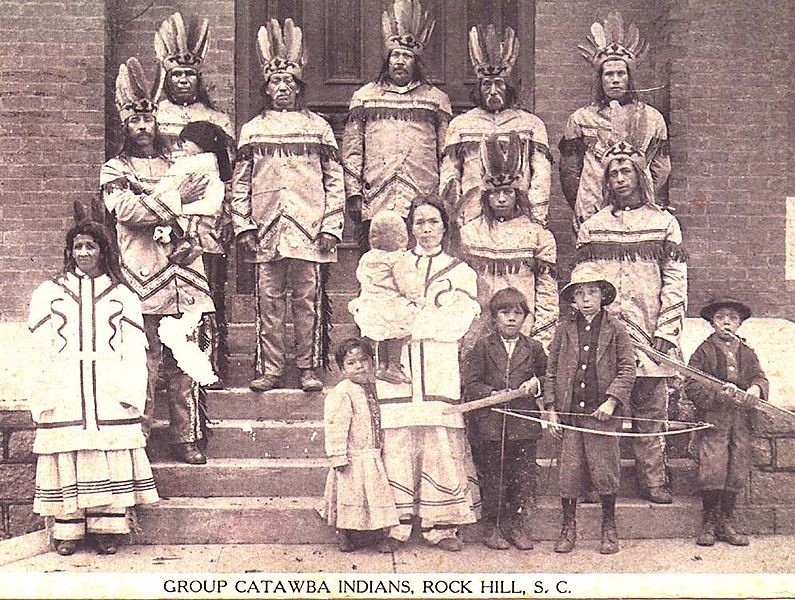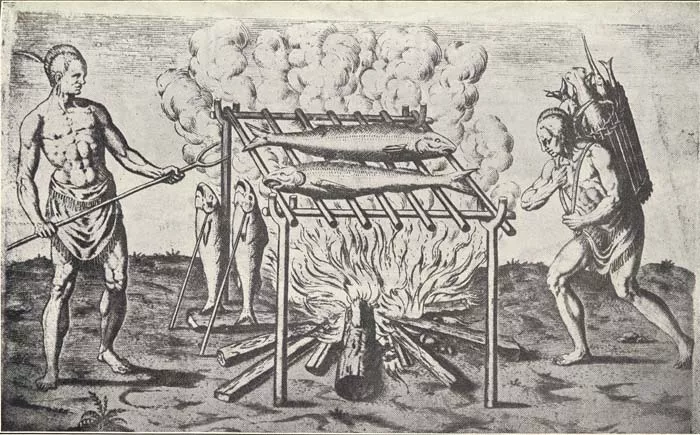Friday, December 21, 2012
News / Opinion Question the Queen City: Who were the Native Americans that lived here before Charlotte was colonized?
Posted By David Aaron Moore on Fri, Dec 21, 2012 at 2:18 PM
Editor's note: In this series, local author David Aaron Moore answers reader-submitted questions about unusual, noteworthy or historic people, places and things in Charlotte. Submit inquires to davidaaronmoore@post.com.
Which Native American tribes inhabited the Charlotte region before the area was colonized? - Shelethia Owens, Mount Holly
Many tribes, including the Waxhaw, Cheraw and Catawba, once spread across North Carolina and into parts of Virginia and South Carolina. In fact the very heart of modern Charlotte - the intersection of Trade and Tryon streets - was once the crossroads of two major Native American trade routes. It was from this spot that the city we know sprang forth, but not without a high cost for the native people.
Tribal warfare, European invasion and diseases spread by New World settlers virtually destroyed what was once a thriving community.
Catawba
The Catawba, also known as the Issa or Esaw, claimed more of North Carolina than any other tribe. Most made their home on either sides of the Catawba River and the Piedmont regions of North and South Carolina. They were the first Native American tribe known to settle in what is today Mecklenburg County.
First appearing in European records around 1567, the Catawba reportedly had a history of protracted battles with Cherokees, Iroquois and Lenapes. They were known to bind the foreheads of infant males, resulting in a "flat-forehead" look, and during warfare paint their faces black, encircling one eye with white paint. (Conservative colonists made note of this "unusual" appearance in records.) Unlike most native tribes, the Catawbas generally stood side by side with European settlers, even going so far as to help them retrieve runaway slaves and fight against French, Spanish and British loyalists.
At its largest the Catawba population was estimated to be about 10,000, but a smallpox epidemic in 1759 killed nearly half the tribe. As the years passed, their numbers continued to dwindle: 1822, 450; 1826, 110.
With the population nearly decimated, they ceded any remaining homeland to South Carolina in 1840. The treaty, however, was deemed invalid by the United States government in 1959. In the 1970s, the nation began restructuring, and in 1993 the federal government and the state of South Carolina provided a substantial land and financial settlement. By 2006, the Catawba tribe had a population of 2,600, mostly in South Carolina. The Catawba State Reserve is located in York County.
Cheraw
The original name of this tribe has been lost in the cracks of time. "Cheraw" is believed to be a European interpretation blended with Portuguese, Spanish and English words. Noted for the first time in European records by explorer Hernando De Soto in 1540, the Cheraw initially called Henderson, Polk and Rutherford counties home, their population numbering about 1,500. After many years of battles with the Iroquois, they moved south around 1712 to the Pee Dee area of present-day South Carolina, establishing a village in what is now known as Cheraw. By 1768, their population had dwindled to less than 60, and those who remained assimilated into neighboring tribes and European settlements.
Waxhaw
This tribe resided in the counties of Lancaster in South Carolina and Union and Mecklenburg in North Carolina. It is thought that they had similar architecture and rituals, including the traditional head-binding, to the Catawba. Tribal warfare and a European-transmitted smallpox epidemic in 1741 disbanded the Waxhaw, and survivors likely joined the Catawba. With the tribe no longer in existence, the land was quickly taken over by European settlers.
Moore is the author of "Charlotte: Murder, Mystery and Mayhem." His writings have appeared in numerous publications throughout the U.S. and Canada.
Speaking of...
Comments
Showing 1-1 of 1
















